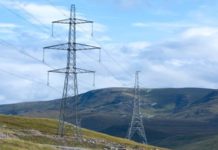GridBeyond‘s UK managing director Wayne Muncaster is urging large energy users to increase their participation in demand-side response (DSR).
“There are huge opportunities for commercial and industrial energy users, as wholesale markets and balancing markets are starting to come together,” commented Muncaster, speaking at The Energyst Event.
He points out that the energy landscape in the UK has been changing, during the past 10 years, with a proliferation of large-scale solar, increasing penetration of wind power and, more recently, large-scale battery storage. These changes are bringing challenges, increasing complexity, as well as opportunities for businesses that are seeking to monetise their power assets.
“These energy sources have a very different profile to the large thermal generators of the past, which are coming off line at a rapid rate in the wake of the large combustion plant directive,” explained Muncaster. “This has created a very different energy mix. Energy users are also increasingly investing in self-generation, with roof-top solar in the residential market place and we are seeing the start of battery energy storage.
“In the commercial space, there is more rapid change with CHP and increasing penetration of behind the meter battery storage. All of this, added to the grid-scale energy mix, makes forecasting and balancing much more complicated and this creates problems for National Grid,” Muncaster continued.
DSR, and the flexibility it provides, is crucial in supporting the UK’s transition to lower-carbon generation. Large energy users can benefit financially, and this is going to become an increasingly attractive proposition in the wake of rising energy costs. According to Muncaster, a 40% increase in electricity costs is predicted over the next four years, making it essential for consumers to participate in the energy markets in different ways, using a holistic approach.
In an exclusive interview at The Energyst Event, Wayne Muncaster, highlighted the challenges and opportunities ahead, adding that: “Consumption of power doesn’t have to be passive…there are many different ways to use and control assets, which can help reduce energy spend.” To view the video, click here.



